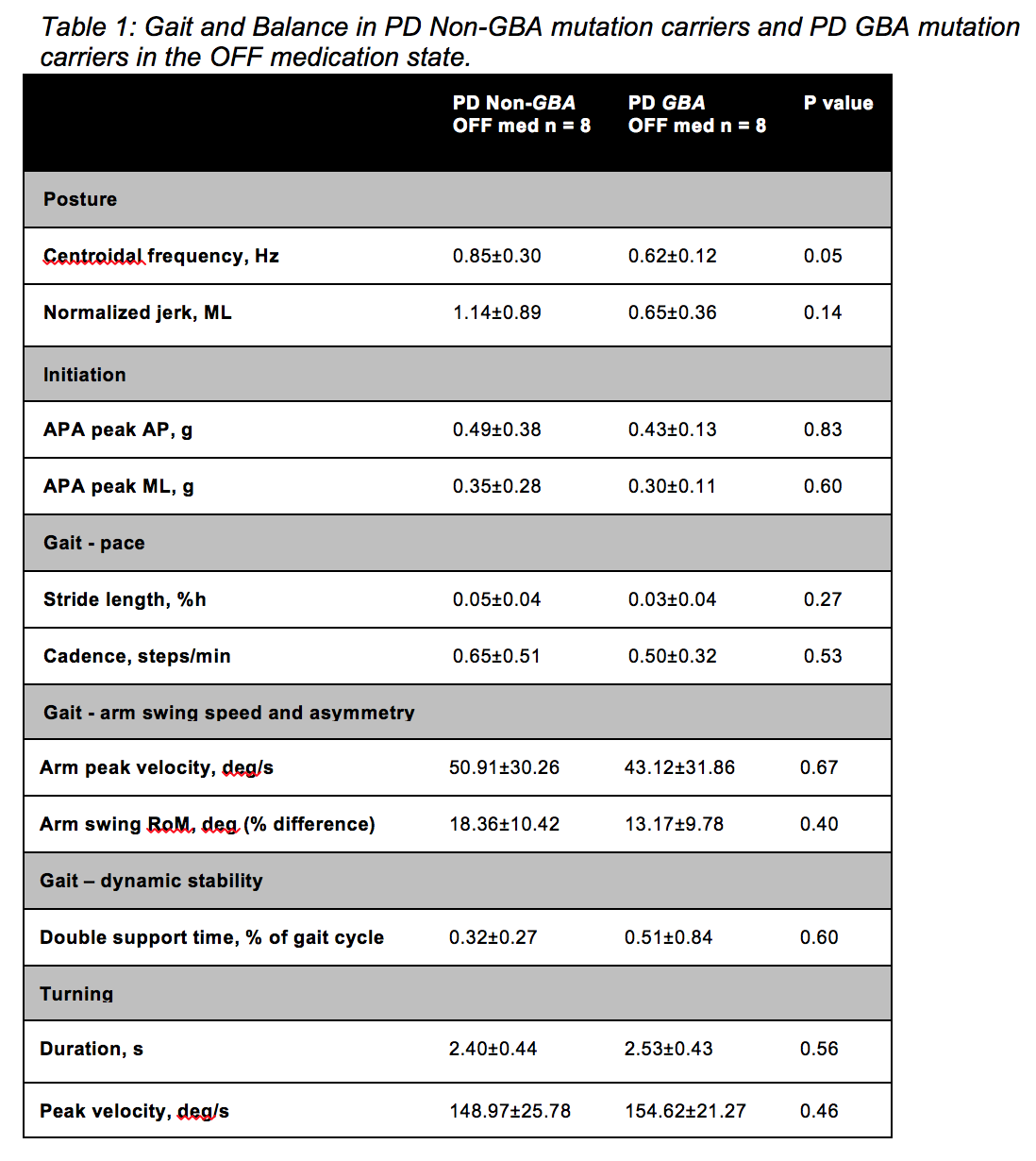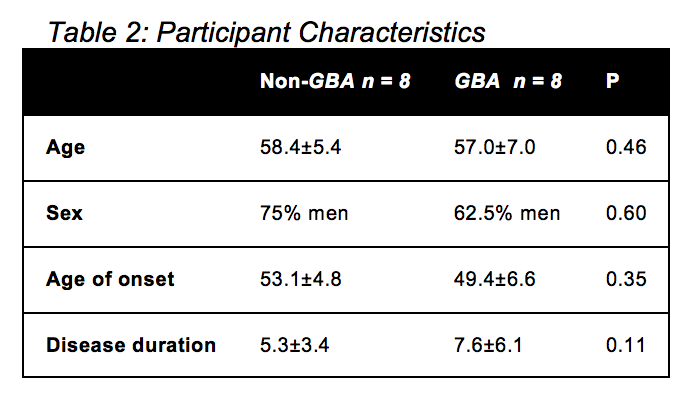Session Information
Date: Monday, October 8, 2018
Session Title: Parkinson's Disease: Genetics
Session Time: 1:15pm-2:45pm
Location: Hall 3FG
Objective: To use quantitative inertial sensor-based postural sway and gait analysis to determine potential differences in the pattern of balance and gait impairment in the OFF medication state between GBA mutation carriers and non-mutation carriers with PD.
Background: The most common known genetic risk factor for PD is the presence of a mutation in the glucocerebrosidase (GBA) gene [Ref. 1]. GBA mutation carriers with PD are at higher risk of cognitive decline, but the specific motor phenotype is not well characterized. There is limited data regarding whether there are differences in gait and balance dysfunction comparing GBA mutation and non-mutation carriers.
Methods: 88 PD subjects were screened for GBA mutation status. From this group we identified 8 GBA mutation carriers. Non-mutation carriers were matched to the GBA mutation carriers based on age of onset (+/- 5 years), disease duration (+/- 5 years), and sex. Demographic information was collected and a neurologic exam was performed. GBA mutation carriers and matched non-mutation carriers were administered the Instrumented Stand and Walk (ISAW) protocol in the OFF medication state. The ISAW was performed 3 times and consisted of standing quietly for 30 seconds, followed by a verbal instruction to initiate gait, walk 7 meters, turn 180 degrees after crossing a marker on the ground, and return to the initial starting point [Ref. 2]. Specific domains of balance and gait were chosen based on which variables were most levodopa-responsive [Ref. 2, Table 1]. These domains included arm swing asymmetry, which is the absolute difference in right and left arm swing range of motion.
Results: Motion analysis results were available for 8 GBA mutation carriers and 8 non-mutation carriers. There was no significant difference in age, sex, age of onset, or disease duration comparing the two groups [Table 2]. Motion analysis did not reveal any significant differences in postural sway or gait initiation, pace, arm swing asymmetry, dynamic stability or turning between GBA mutation and non-mutation carriers with PD [Table 1].
Conclusions: Preliminary analysis in this small cohort did not demonstrate significant differences between GBA mutation carriers and non-mutation carriers in postural sway and gait parameters. However, studies with a larger sample size are needed to determine whether there are differences in balance and gait dysfunction between GBA mutation and non-mutation carriers.
References: 1. Sidransky E, Nalls MA, Aasly JO, Aharon-Peretz J, Annesi G, Barbosa ER, et al. Multicenter analysis of glucocerebrosidase mutations in Parkinson disease. N Engl J Med. 2009;361:1651–61. 2. Curtze, C, Nutt, JG, Carlson-Kuhta, P, Mancini, M and Horak, FB, Levodopa Is a Double-Edged Sword for Balance and Gait in People with Parkinson’s Disease. Mov Disord. 2015;30:1361–70.
To cite this abstract in AMA style:
A. Gera, J. Okeefe, N. Purcell, C. Huml, S. Ruehl, B. Ouyang, G. Pal. Balance and gait analysis of GBA mutation carriers with Parkinson’s disease (PD) [abstract]. Mov Disord. 2018; 33 (suppl 2). https://www.mdsabstracts.org/abstract/balance-and-gait-analysis-of-gba-mutation-carriers-with-parkinsons-disease-pd/. Accessed April 18, 2025.« Back to 2018 International Congress
MDS Abstracts - https://www.mdsabstracts.org/abstract/balance-and-gait-analysis-of-gba-mutation-carriers-with-parkinsons-disease-pd/


